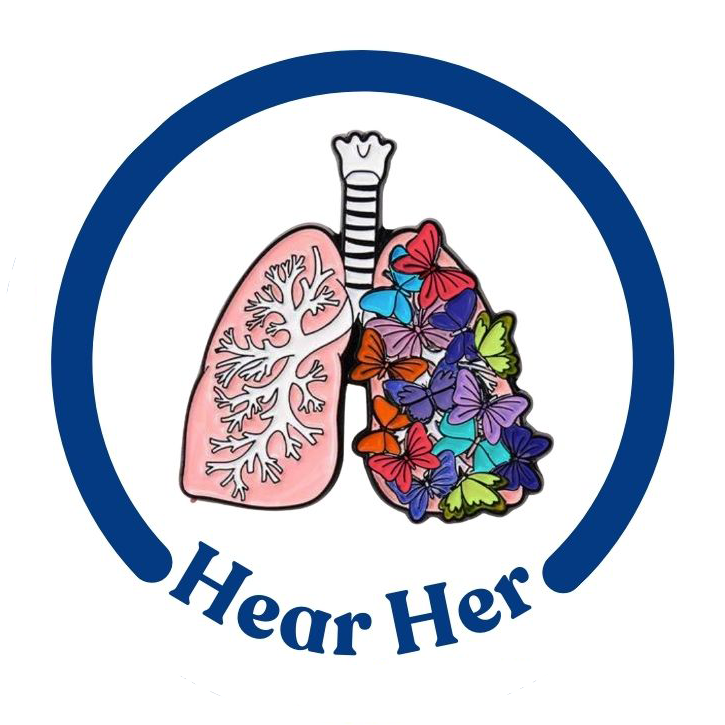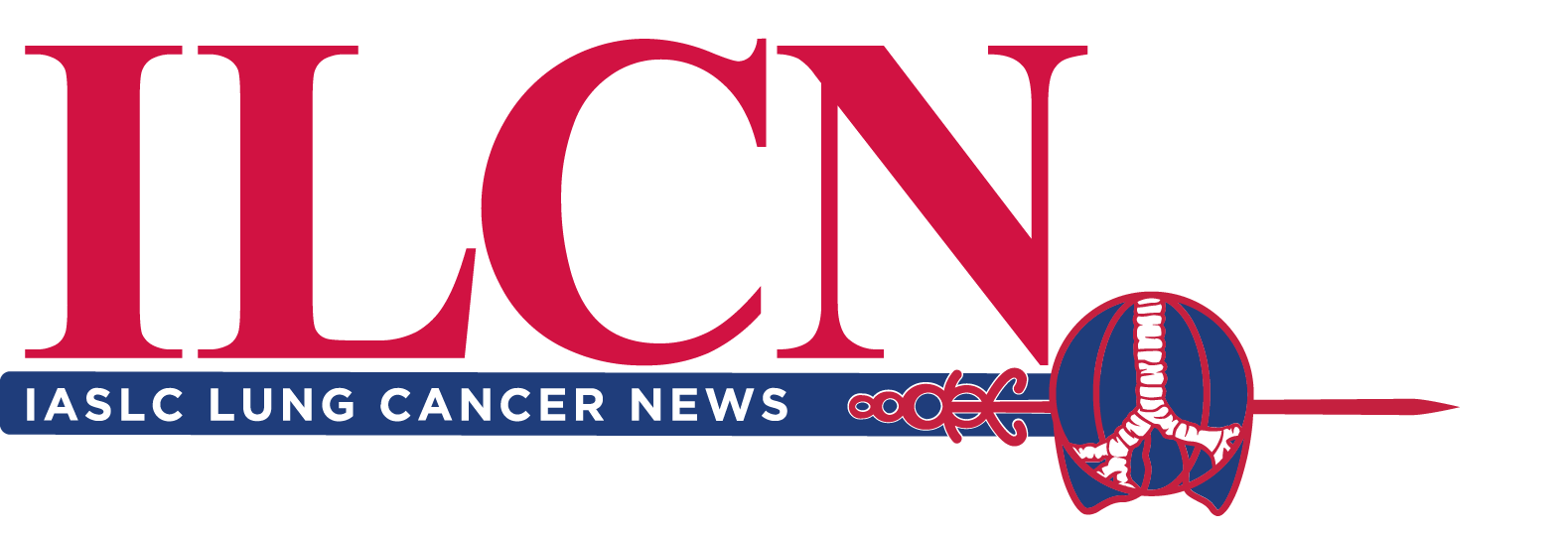
What would you do if you suspected that your back pain was the first sign of lung cancer—and no one had listened? Or perhaps you had repeatedly told your healthcare team about your shortness of breath, only to be brushed off—later discovering that the cause was a lung tumor?
These are not hypothetical scenarios. They are realities that women face daily. Narjust Florez, MD, a thoracic medical oncologist at the Dana-Farber Cancer Institute and Harvard Medical School, who specializes in treating young adults and women, has encountered numerous cases of women with stage IV lung cancer following delayed diagnoses.
Dr. Florez, who is Associate Director of the Cancer Care Equity Program at Dana-Farber, has seen women who reported chest pressure, a persistent cough, or shortness of breath to their providers, only to have their symptoms dismissed as anxiety, allergies, or “being a busy mom.”

Other patients have been denied imaging because they were “too young” to have lung cancer. In some cases, diagnoses are only made following an unrelated medical event, such as a car accident. These late diagnoses, fueled by inaccurate assumptions, lead to delayed cancer detection and advanced staging at diagnosis.
Determined to bring awareness to the rising incidence of lung cancer in women, Dr. Florez and colleague Angela Morabito, BS, a member of the Florez laboratory, have launched a campaign urging the medical community to “hear her.”
Coinciding with the start of Lung Cancer Awareness Month in November, the Florez lab sent more than 500 people—including international physicians, cancer researchers, allied health professionals, patient advocates, caregivers, and patients—an informational card (see below) about lung cancer in women and the #HearHer lung pin.

The campaign quickly gained momentum on social media as people shared images of their pin, with the caption #HearHer. With the support of organizations such as the Young Lung Cancer Initiative, the EGFResisters, ALK Positive, and Lungevity, the campaign expanded. Patients shared personal diagnostic stories, advice, and emotional support.
Providers have called for increased awareness about lung cancer in women, re-evaluation of current screening guidelines, and requested more pins to share with their patients, colleagues, and trainees. Oyepeju Abioye-Akintola, MD, MSc, an internal medicine resident at Allegheny Health Network and a member of the Florez lab, collaborated with colleagues to translate #HearHer into 20 languages.

Dr. Florez said the overwhelming response to the launch of the awareness campaign demonstrates women’s strong desire to have their voices heard and to share their experiences.
“This also highlights the growing trend of women being diagnosed with lung cancer, often being overlooked by providers, resulting in delayed diagnosis and worse outcomes,” she said. “Lung cancer is the leading cause of cancer-related deaths in women in the United States and across many countries.” Lung cancer was responsible for about 1.8 million deaths in 2020 1,2,3 and is the second most diagnosed cancer in women, only surpassed by breast cancer.2
Additionally, lung cancer in women has unique clinicopathologic characteristics and risk factors.4

Even with no history of tobacco use, women are twice as likely to be diagnosed with lung cancer,1 suggesting that other exposures or factors, such as biomass fuels, radon, asbestos, and a family history of lung cancer, may be at play.5,6 Despite these risks, strict lung cancer screening measures and stigma hinder access to care.
A study on patient-provider communication found that women were 32% less likely to discuss lung cancer screening with their healthcare providers compared to men within the same study population.7 Screening access is further limited by age and tobacco use history, which often exclude women.8
To date, more than 1,200 #HearHer pins have been distributed globally, which Dr. Florez said shows the growing interest in raising awareness about lung cancer in women. Through social media, the campaign has educated the public about the unique challenges women face in diagnosis and care. She said the Florez lab will continue to use #HearHer to amplify women’s voices, support them to advocate for their health, and call on providers to listen—to truly hear her.
For more information about the #HearHer campaign or to receive a pin, email the Florez Lab at [email protected] or connect via social media channels: X, @Florez_Lab; Instagram, @florezlab; or BlueSky @florezlab.bsky.social. Allies with pins are encouraged to share a photo with it and tag the Florez lab with the #HearHer.
HEAR HER

About the Campaign
Rising lung cancer rates in women are troubling, as their symptoms are often dismissed or misdiagnosed, leaving them unheard. The Florez Lab aims to raise awareness, validate their experiences, and give these women a voice.
Lung Cancer in Women
Women often face delays in the diagnosis and treatment of lung cancer, and since 2018, younger women have been diagnosed at greater rates than
young men. Furthermore, women are less likely to be offered lung cancer screening or be enrolled in lung cancer clinical trials compared to men.
References
- 1. Tsai LL, Chu N-Q, Blessing WA, Moonsamy P, Colson YL. Lung Cancer in Women. The Annals of Thoracic Surgery. 2022;114(5):1965-73.
- 2. Sung H, Ferlay J, Siegel RL, Laversanne M, Soerjomataram I, Jemal A, et al. Global Cancer Statistics 2020: GLOBOCAN Estimates of Incidence and Mortality Worldwide for 36 Cancers in 185 Countries. CA Cancer J Clin. 2021;71(3):209-49.
- 3. Ganti AK, Klein AB, Cotarla I, Seal B, Chou E. Update of Incidence, Prevalence, Survival, and Initial Treatment in Patients With Non–Small Cell Lung Cancer in the US. JAMA Oncology. 2021;7(12):1824-32.
- 4. Florez N, Kiel L, Riano I, Patel S, DeCarli K, Dhawan N, et al. Lung Cancer in Women: The Past, Present, and Future. Clin Lung Cancer. 2024;25(1):1-8.
- 5. Leiter A, Veluswamy RR, Wisnivesky JP. The global burden of lung cancer: current status and future trends. Nature Reviews Clinical Oncology. 2023;20(9):624-39.
- 6. Society AC. Lung Cancer Risk Factors 2024 [Available from: https://www.cancer.org/cancer/types/lung-cancer/causes-risks-prevention/risk-factors.html.
- 7. Duma N, Vera Aguilera J, Paludo J, Haddox CL, Gonzalez Velez M, Wang Y, et al. Representation of Minorities and Women in Oncology Clinical Trials: Review of the Past 14 Years. J Oncol Pract. 2018;14(1):e1-e10.
- 8. MacRosty CR, Rivera MP. Lung Cancer in Women: A Modern Epidemic. Clinics in Chest Medicine. 2020;41(1):53-65.





